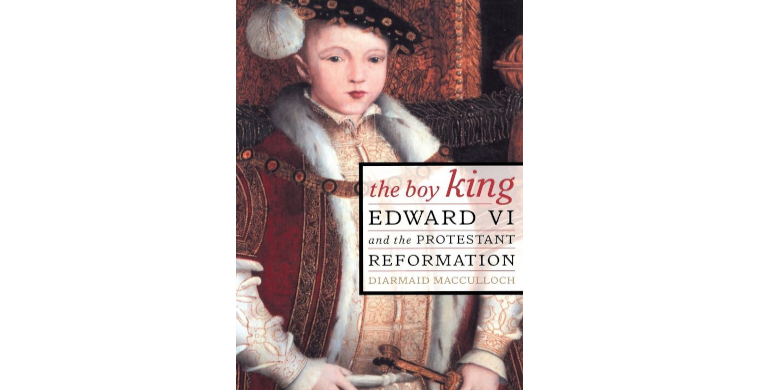Edward VI: The Boy-King and the Protestant Reformation
By Chuck Collins
www.virtueonline.org
August 8, 2023
The boy-king EDWARD VI was buried in a white marble vault beneath the communion table in Henry VII's Lady Chapel in Westminster Abby August 8, 1553. Archbishop Thomas Cranmer officiated using "The Order for the Burial of the Dead" from the new 1552 Book of Common Prayer, a perfect fit for Edward's Protestant convictions.
Even though he was very young and king for only six years, during his reign the first two Prayer Books were written for the Church of England (1549, 1552), the homilies that were written for the purpose of shaping the church into Protestantism were being read from every pulpit every Sunday, the Articles of Religion was adopted as Anglican's confessional statement, and the evangelical faith was irrevocably planted.
There was not immediate enthusiastic agreement about these monumental changes, and there were some who were willing to fight and even die for the old Latin mass. But in the end, the Church of England upheld the Bible as its primary authority, guided by the Bible's central message of justification by grace through faith alone. It shifted focus from the Medieval sacerdotal priesthood to universal priesthood (of all believers).
And Anglicans held to an understanding of "real presence" located, not in the bread and wine on an altar to be gazed upon and carried around, but rather in the hearts of the people who receive the grace of the sacrament by faith. Edward's half-sister and successor, Bloody Mary Tudor, tried to derail the Protestant train, but it wouldn't be stopped.
With Edward, everything about the church in England was changed. His goal was to ground the church in the authority of Holy Scripture and the teaching of the church fathers: to restore catholicity. As historian Diarmaid MacCulloch said, this was visually recognizable by everyone who walked into a church: three new pieces of church furniture - a wooden communion table, a poor box, and a pulpit.
"The extent of the change would have been obvious to anyone walking into a fully reformed English church building in 1553. . .
Three new pieces of church furniture stood out amid the mostly adapted and purged remains of the old. A wooden table, moveable into the body of the church for communion services, symbolized the overthrow of the old mass, with all its associated theology of a sacrificing, celibate priesthood; to emphasize this rejection, the table was placed at right angles to the alignment of the old altars.
A poor box to collect alms, which the Edwardian government ordered to be placed in every church, was an official reminder that people's charity was to be directed not to the masses or graven images, but to needy people made in God's image. A pulpit reinforced the message of the walls that God was to be approached most directly through his biblical word: even where the pulpit was inherited from the old pre-Reformation days, it was now used exclusively for preaching, not for leading the recital of the rosary or the medieval extended vernacular prayers known as the bidding of the bedes.
The pulpit would remain the central visual emphasis of most English parish churches down to the nineteenth century, when the Oxford Movement, in a remarkably successful piece of theological alchemy, restored the primacy of the altar."
-- The Boy King: Edward VI and the Protestant Reformation, Diarmaid MacCulloch














